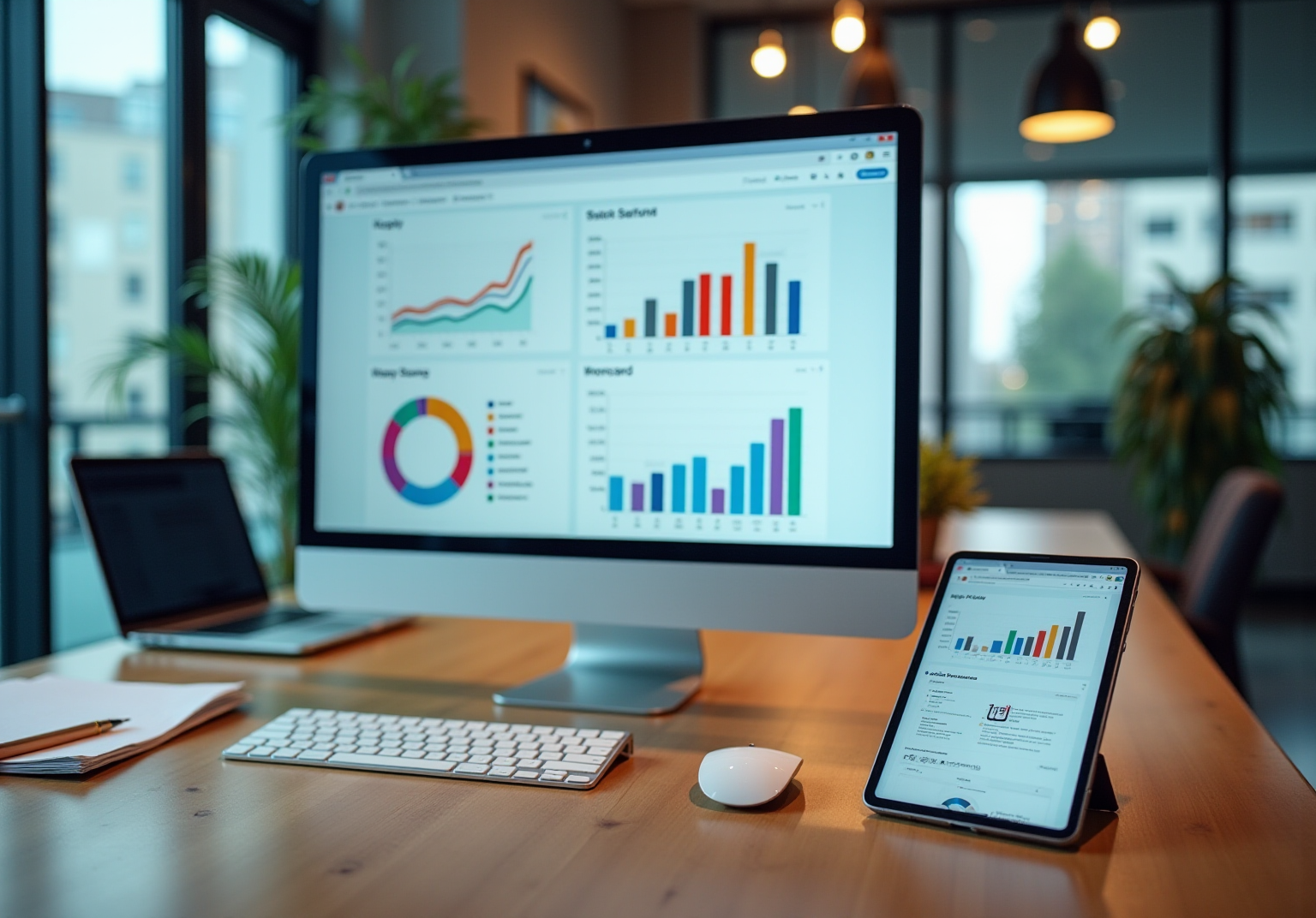
Overview
This article presents a strategic framework for the effective integration of SEO and PPC marketing, aimed at enhancing digital presence and driving substantial traffic. It underscores the significant advantages of this integration, including heightened visibility and improved conversion rates. Supported by compelling case studies and actionable steps, the article addresses the common challenges encountered when merging these two powerful marketing approaches.
Introduction
Combining Search Engine Optimization (SEO) and Pay-Per-Click (PPC) advertising can revolutionize a company's digital marketing landscape. Yet, many businesses overlook the immense potential of this powerful duo. By integrating these two strategies, organizations can significantly enhance their visibility, improve conversion rates, and gain a deeper understanding of customer behavior.
The challenge, however, lies in effectively merging these distinct approaches. How can companies harness the strengths of both to maximize their marketing impact?
This article provides a comprehensive, step-by-step guide to successfully combine SEO and PPC efforts, offering valuable insights and practical solutions to common integration challenges.
Define SEO and PPC: Core Concepts and Differences
Search Engine Optimization (SEO) is the pivotal process of enhancing a website's visibility in organic search results. This entails optimizing critical elements such as content, keywords, and site structure to elevate rankings on search engines like Google.
As we look ahead to 2025, the influence of AI and machine learning on SEO is profound; experts assert that these technologies are revolutionizing the presentation of search results.
In contrast, Pay-Per-Click (PPC) advertising represents a strategic avenue where businesses incur a fee each time their ad is clicked. PPC ads typically dominate the top positions on search engine results pages (SERPs), offering immediate visibility. Remarkably, data reveals that when a search follows the viewing of a display ad, there is a 59% increase in conversion rates, underscoring the effectiveness of PPC in driving results.
The fundamental distinction lies in their approaches:
- SEO is focused on cultivating organic traffic,
- PPC is a paid strategy aimed at delivering rapid outcomes.
Furthermore, with mobile devices accounting for 70% of search ad impressions in the U.S., optimizing for mobile is essential for both methodologies. Understanding these differences is vital for seamlessly of SEO and PPC marketing into a cohesive marketing plan.
Jes Scholz emphasizes that impactful SEO is seldom the result of solitary efforts, underscoring the necessity of collaboration for achieving effective outcomes. Additionally, businesses are increasingly acknowledging the importance of a balanced marketing approach, as PPC traffic converts 50% better than organic traffic.
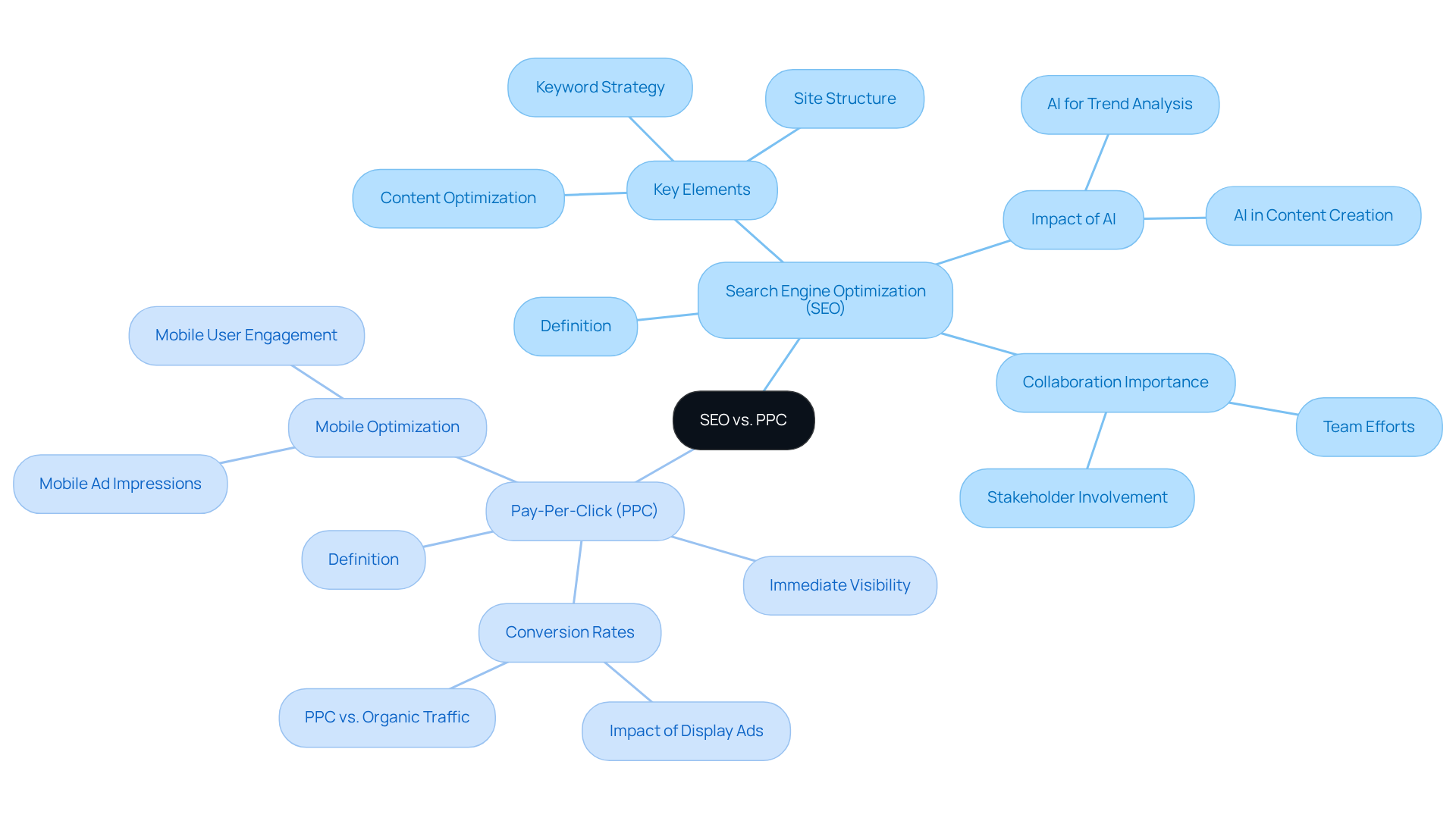
Explore the Benefits of Integrating SEO and PPC Strategies
The benefits of combining SEO and PPC marketing strategies are numerous for companies aiming to elevate their digital presence. This approach significantly boosts visibility across search results, empowering companies to dominate both organic and paid placements. Such a dual presence frequently results in higher click-through rates (CTR) and increased recognition, as consumers are more inclined to engage with companies they encounter in various formats.
For instance, a $30M clothing line partnered with Parah Group and observed a remarkable 35% increase in conversion rates after implementing a comprehensive CRO plan that included optimizing their homepage, reducing unnecessary pop-ups, and gamifying the progress bar for free shipping thresholds. Similarly, Grab Green, a $15M cleaning product company, achieved an impressive 80% rise in average order value (AOV) by experimenting with free shipping thresholds and introducing bundles and complimentary gifts over a certain cart size. These case studies underscore the effectiveness of with CRO to drive substantial revenue growth.
Moreover, harnessing PPC data can significantly inform SEO initiatives. Identifying high-performing keywords through PPC campaigns can steer the development of organic content, ensuring it resonates with the target audience. This synergy allows companies to leverage immediate traffic from PPC while concurrently establishing long-term visibility through SEO and PPC marketing.
Expert Anish Vijayan asserts that businesses should no longer chase customers; instead, they must ensure their presence when prospects require their services. By adopting these strategies, companies can enhance return on investment (ROI), improve targeting, and gain deeper insights into customer behavior. As businesses navigate the complex online landscape of 2025, the integration of SEO and PPC marketing, along with effective CRO strategies from Parah Group, will be vital for enhancing reach and engagement, ultimately promoting sustained growth and profitability.
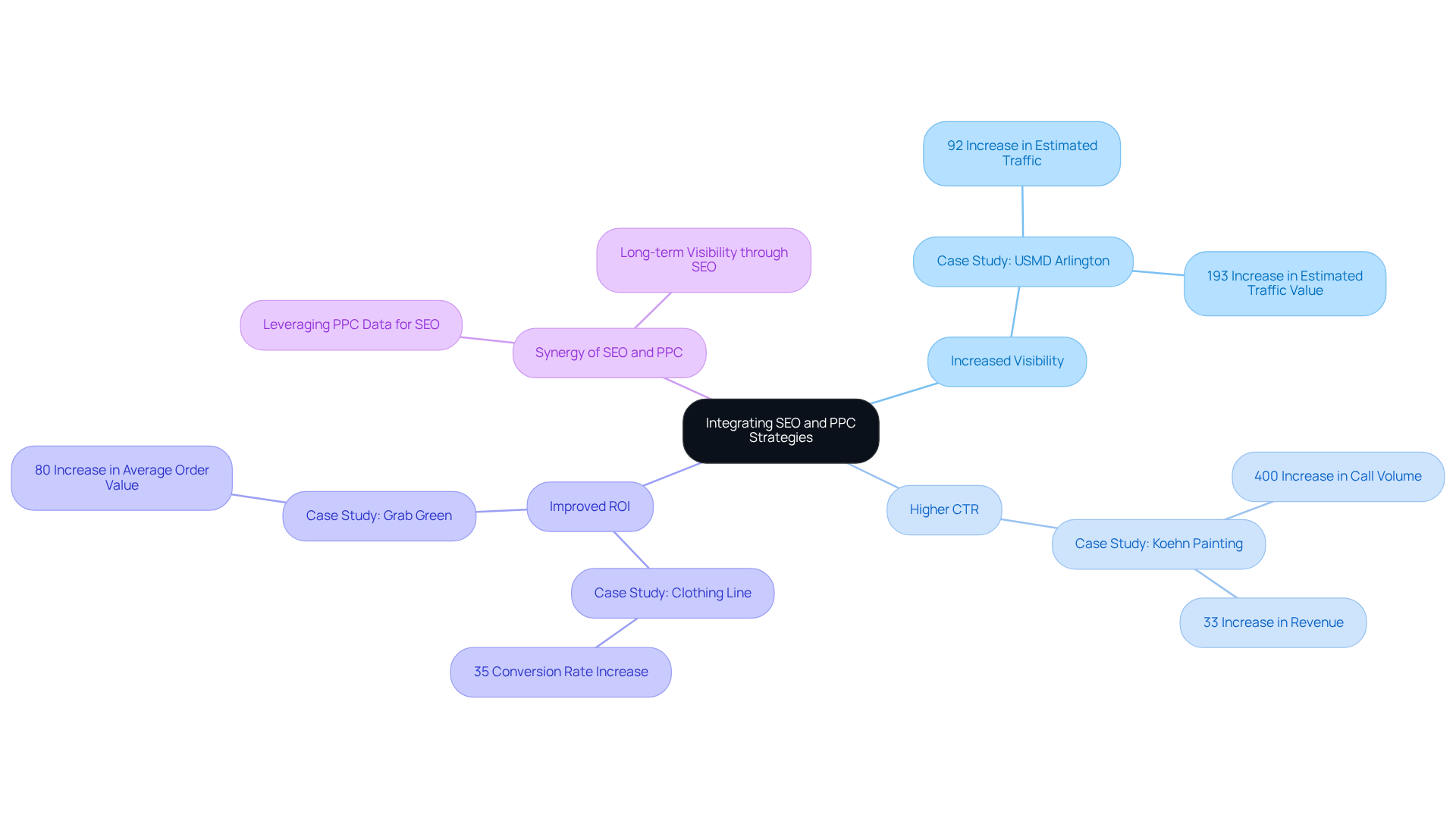
Implement a Step-by-Step Plan to Combine SEO and PPC Efforts
To effectively combine SEO and PPC efforts, follow these essential steps:
- Conduct comprehensive keyword research by utilizing tools like Google Keyword Planner to identify high-value keywords that are relevant to SEO and PPC marketing. Prioritize keywords with high search volume and low competition, as these can drive significant traffic while remaining cost-effective. Focusing on low-competition keywords can be especially advantageous for DTC brands aiming to enhance their approaches effectively.
- Align Messaging and Branding: Ensure that the messaging in your PPC ads is consistent with the content on your landing pages. This alignment fosters trust and can lead to improved conversion rates, as users are more likely to engage with familiar and coherent messaging. Research shows that SEO and PPC marketing converts traffic 50% better than organic methods, making this alignment crucial.
- Create an Integrated Content Strategy: Develop content that targets the identified keywords for SEO and PPC marketing. This includes crafting blog posts, landing pages, and ad copy that resonate with your audience's needs and preferences, enhancing overall engagement. A full-stack user acquisition approach is essential for maximizing effectiveness.
- Utilize PPC for Testing: Leverage PPC campaigns to and ad copy variations. Examine which combinations produce the best outcomes, and utilize these insights to enhance your SEO and PPC marketing strategy, ensuring that both channels operate synergistically. This iterative process is crucial for adapting to changing market dynamics. [Parah Group](https://parahgroup.com) emphasizes the importance of data-driven decisions that contribute to sustainable growth and profitability.
- Monitor and Adjust: Regularly review performance metrics from both SEO and PPC campaigns. Utilize this data to make informed modifications to your plans, ensuring ongoing enhancement and alignment with your business objectives. Incorporating local search trends into your approach can enhance visibility, particularly with nearly 50% of Google searches aimed at discovering local services.
By following these steps, DTC brand owners can effectively combine SEO and PPC efforts to drive traffic and improve conversion rates. Begin applying these techniques today to observe tangible outcomes in your marketing endeavors. Additionally, once you partner with Parah Group, you will benefit from a tailored onboarding process that aligns with your specific goals, ensuring a strategic approach to your marketing efforts.
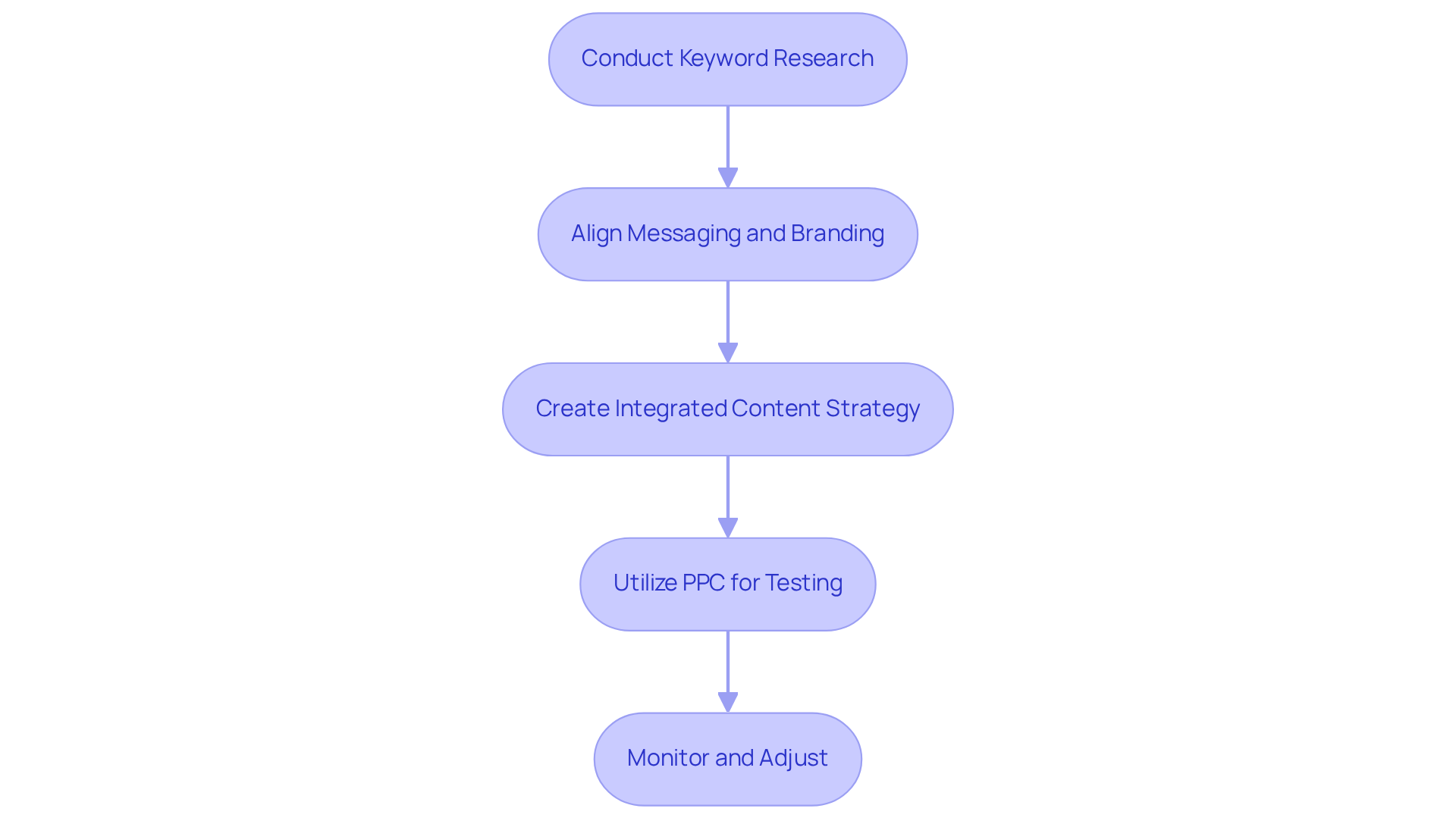
Troubleshoot Common Issues in SEO and PPC Integration
Integrating SEO and PPC presents several challenges that demand strategic solutions:
- Lack of Coordination: SEO and PPC teams frequently operate independently, leading to inconsistent approaches. To overcome this, establish regular meetings to encourage collaboration and share insights, fostering a unified approach to SEO and PPC marketing efforts. As Matt Cutts emphasizes, 'You can’t optimize what you don’t measure,' highlighting the importance of integrating data from both SEO and PPC marketing channels.
- Budget Allocation Conflicts: Allocating budgets between SEO and PPC can be complex. Establish clear goals for each plan and modify budgets according to performance metrics. In 2025, marketers are expected to allocate approximately 60% of their digital marketing budget to PPC. However, when SEO and PPC marketing sessions account for 50% of paid search traffic, customer acquisition costs (CAC) can drop by 20%, illustrating the necessity for careful planning to balance both channels effectively.
- Inconsistent Messaging: Discrepancies between PPC ad messaging and landing page content can confuse potential customers. Ensure that all messaging is cohesive and reflects the identity's voice, enhancing user experience and trust. Notably, 96% of prospects conduct their own research before engaging with a sales representative, making consistent messaging crucial in influencing their decisions.
- Data Silos: Integrating data from SEO and PPC marketing campaigns is essential for a comprehensive view of performance. Utilize analytics tools in SEO and PPC marketing to merge data sets, providing across both channels and enabling more informed decision-making. In fact, 61% of sales leaders automated their CRM software in 2023, facilitating this integration.
- Neglecting Long-Term SEO Objectives: While PPC can yield quick outcomes, it’s crucial not to disregard long-term SEO plans. Balancing short-term gains with sustainable growth ensures that your business remains competitive in the evolving digital landscape. For instance, a prominent financial services firm achieved an 84% rise in traffic through effective SEO and PPC marketing strategies, showcasing the advantages of addressing these challenges.
By tackling these common issues, brands can forge a more effective and cohesive digital marketing strategy that leverages the strengths of SEO and PPC marketing.
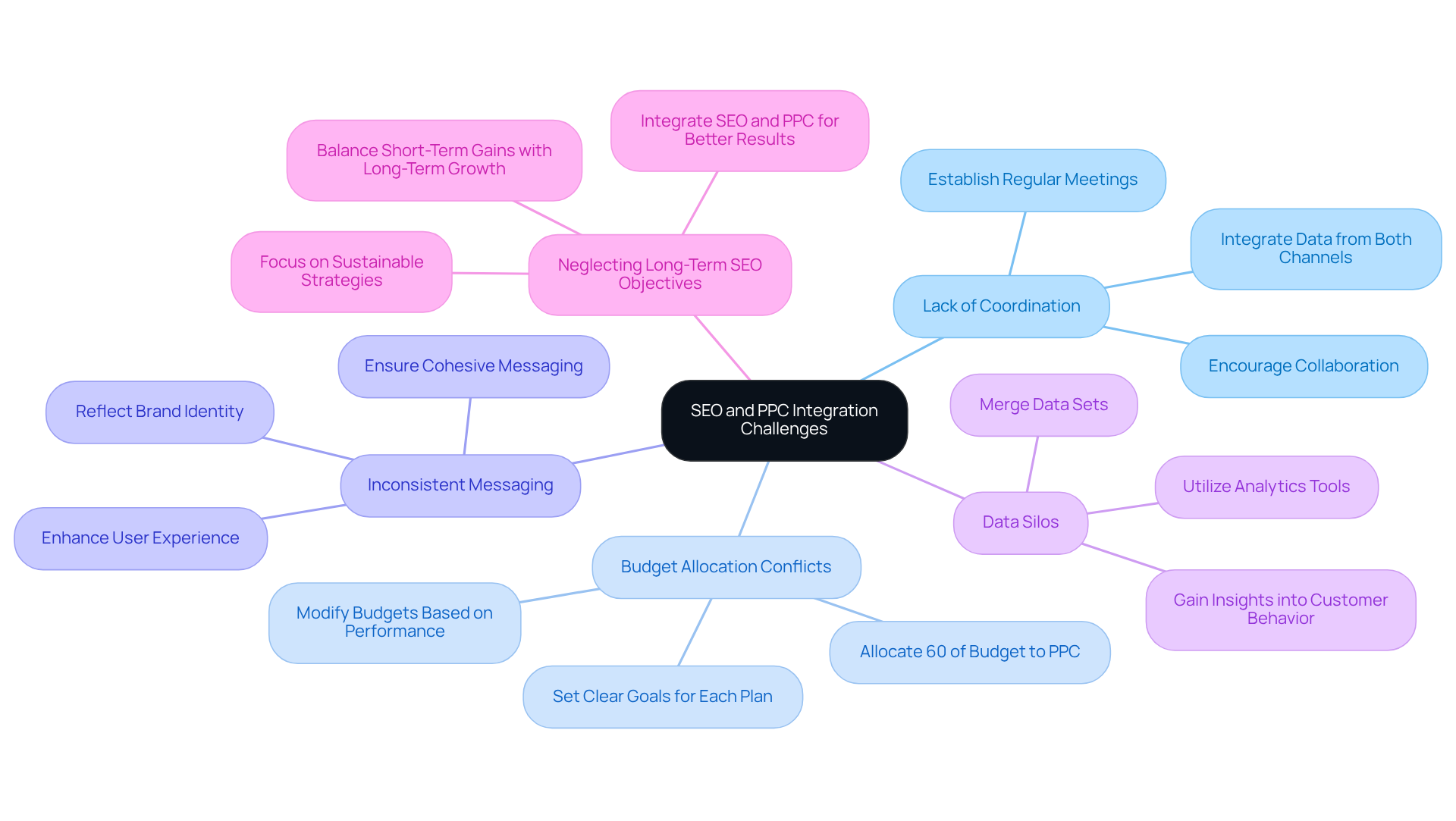
Conclusion
Integrating SEO and PPC marketing strategies represents a powerful approach for businesses seeking to enhance their online visibility and drive conversions. By understanding the distinct roles of SEO in generating organic traffic and PPC in delivering immediate results, companies can create a synergistic marketing plan that maximizes their reach and effectiveness.
This dual strategy not only boosts visibility across search results but also aligns messaging and branding, reinforcing the overall marketing effort. Leveraging PPC insights to inform SEO initiatives is essential, as it allows businesses to refine their strategies based on real-time data. Practical steps for combining these strategies include:
- Conducting comprehensive keyword research
- Monitoring performance metrics to ensure continuous improvement
Ultimately, the integration of SEO and PPC is not merely a tactical decision; it is a strategic imperative for businesses aiming to thrive in a competitive digital landscape. By embracing these combined efforts, companies can enhance their return on investment, improve customer targeting, and foster deeper insights into consumer behavior. The time to act is now—implement these strategies to unlock the full potential of your marketing efforts and achieve sustainable growth.
Frequently Asked Questions
What is Search Engine Optimization (SEO)?
SEO is the process of enhancing a website's visibility in organic search results by optimizing elements such as content, keywords, and site structure to improve rankings on search engines like Google.
How is AI impacting SEO as we approach 2025?
AI and machine learning are significantly influencing SEO by revolutionizing the presentation of search results, leading to more effective and relevant search outcomes.
What does Pay-Per-Click (PPC) advertising involve?
PPC advertising is a strategy where businesses pay a fee each time their ad is clicked. It provides immediate visibility, as these ads typically appear at the top of search engine results pages (SERPs).
How effective is PPC in driving conversions?
Data indicates that when a search follows the viewing of a display ad, there is a 59% increase in conversion rates, highlighting the effectiveness of PPC in driving results.
What is the fundamental difference between SEO and PPC?
The main difference is that SEO focuses on cultivating organic traffic, while PPC is a paid strategy aimed at delivering rapid outcomes.
Why is mobile optimization important for SEO and PPC?
Mobile devices account for 70% of search ad impressions in the U.S., making it essential to optimize for mobile in both SEO and PPC strategies.
What role does collaboration play in effective SEO?
Effective SEO is seldom the result of solitary efforts; collaboration is necessary to achieve impactful outcomes.
How does PPC traffic compare to organic traffic in terms of conversion?
PPC traffic converts 50% better than organic traffic, emphasizing the importance of a balanced marketing approach that integrates both strategies.
FAQs











